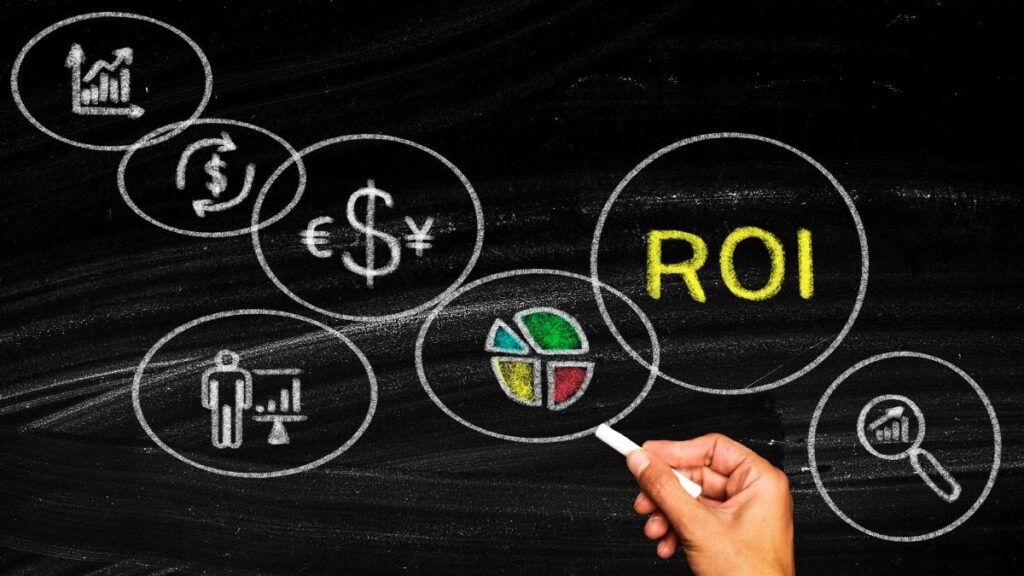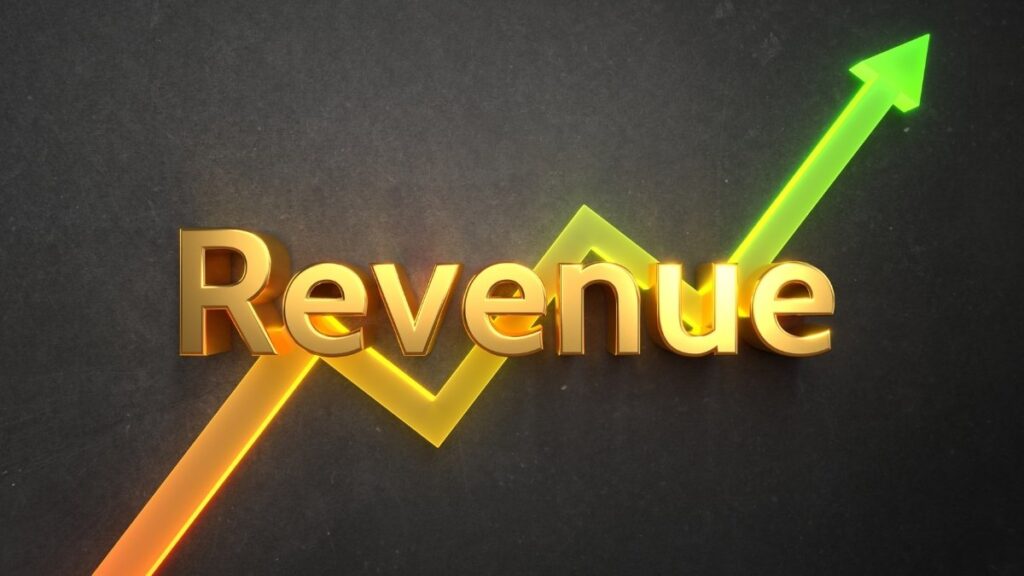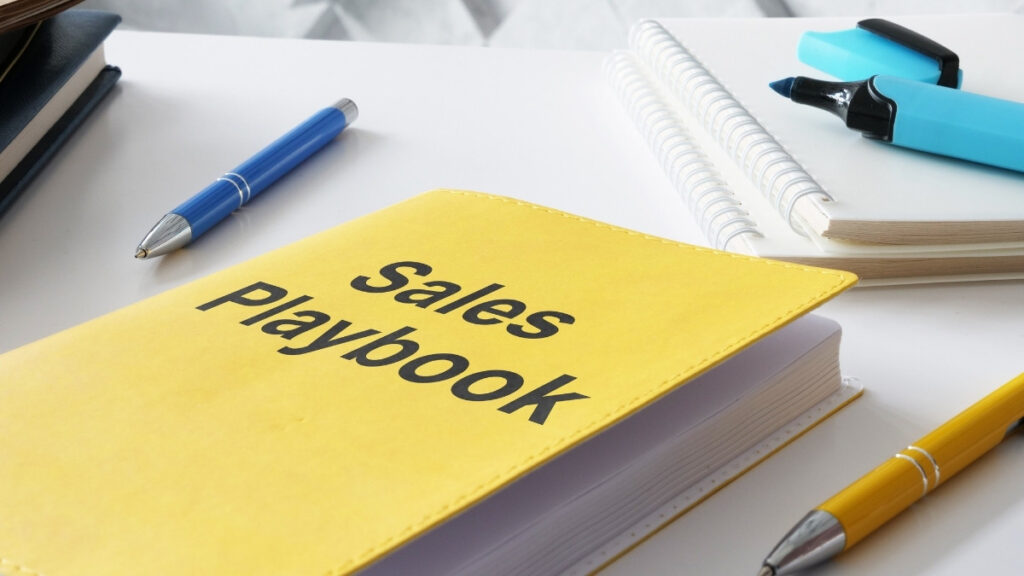For years, the gospel of modern investing has been preached from a single, simple hymnal: dollar-cost average into a low-cost S&P 500 index fund, reinvest the dividends, and let the magic of compounding work for you over decades.
It’s the default setting for wealth accumulation, a path of admirable discipline and patience. It’s also a path Mia deliberately chose to reject.
This isn’t a critique of passive investing; it’s a valid strategy for those content to ride the market’s waves. But as a financial analyst, Mia was haunted by a fundamental question: What if there’s a path that offers not just growth, but substantial, controllable cash flow?
An investment that works for you every day, immune to the whims of Wall Street and the panicked headlines of financial news? This question led her away from the abstract world of stock tickers and toward the tangible, humming reality of commercial-grade washing machines.
The Head-to-Head Battle for Your Capital: A Numbers-Driven Comparison
Before committing capital, any serious investor must conduct a rigorous, quantitative comparison of their options.
When a modern laundromat is pitted against a standard S&P 500 index fund, the data reveals a compelling narrative that favors the operational business, not just on returns, but on the very nature and quality of those returns.
Return on Investment (ROI): The Great Divide

The most immediate and striking difference lies in the raw potential for returns. The laundromat industry consistently demonstrates a cash-on-cash Return on Investment (ROI) in the range of $20\%$ to $35\%$.
Some experienced operators report even higher figures, with potential ROIs reaching up to $100\%$, and real-world case studies show initial investments yielding returns over $66\%$.
This stands in stark contrast to the historical performance of the S&P 500. While often touted for its long-term growth, its average annual return since its modern inception is approximately $10\%$. This figure, while respectable, is further diluted by inflation, which reduces the real return to a more modest $6\%$ to $7\%$.
Furthermore, the $10\%$ average for the stock market is just that—an average. It masks periods of extreme volatility and significant drawdowns.
An index fund investor must be prepared to weather severe downturns, such as the $-37\%$ return in 2008 or the $-18.11\%$ return in 2022, which can decimate a portfolio’s value precisely when capital might be needed most.
Cash Flow is King: The Power of a Recession-Resistant Business Model

The true strength of a laundromat investment lies in its stability. Laundry is an essential, non-discretionary service. Regardless of economic conditions, people need clean clothes.
This simple fact makes the business model remarkably recession-resistant, a quality that is exceedingly rare in the investment world.
History provides compelling evidence. The American laundry service industry was born during the Great Depression, and it has thrived through every subsequent economic downturn.
Most recently, during the COVID-19 pandemic, laundromats were designated as “essential businesses” and continued to operate and grow.
The number of coin-operated establishments in the U.S. actually increased from 9,548 in the first quarter of 2020 to 10,026 in the first quarter of 2024.
Risk, Control, and the 95% Success Rate

The perception of small business ownership is often colored by high failure rates. The laundromat industry defies this stereotype with an exceptionally high five-year survival rate of nearly $95\%$.
This statistic is a powerful indicator of the business model’s inherent stability and low risk profile.
To understand why, it’s useful to differentiate between two types of risk:
Market Risk: Uncontrollable, systemic factors that affect an entire asset class, such as geopolitical events, interest rate changes, or broad economic sentiment impacting the stock market.
Operational Risk: Controllable factors specific to the management and execution of a business, such as location selection, customer service, maintenance, and marketing.
An index fund investor is entirely exposed to market risk with zero control over the outcome. A laundromat owner, conversely, faces primarily operational risk. Their success is overwhelmingly determined by their own decisions and execution.
Laundromat vs. S&P 500
Comparing Two Investment Paths
Laundromat Investment
S&P 500 Index Fund
The Anatomy of a High-Performing Laundromat in 2025
Understanding the superior financial metrics is the first step.
The second is to dissect the business itself—to move from abstract percentages to a concrete understanding of the costs, revenues, and operational realities that drive a successful laundromat.
Deconstructing the Investment: What It Really Costs to Get Started

Acquiring a laundromat is a capital-intensive endeavor, a fact that serves as both a barrier to entry and a foundation for a substantial asset.
Startup costs vary significantly based on whether one is buying an existing business or building from the ground up.
A resale business can range from $200,000 to $500,000, while a new build-out in a prime urban location can easily exceed $1 million.
This investment is broken down into several key categories:
Acquisition and/or Real Estate: This is typically the largest single cost, whether purchasing the business, the property, or both.
Commercial Equipment: The heart of the operation. A typical laundromat with 40 to 100 machines can expect equipment costs to range from $60,000 to $500,000 for new units.
High-efficiency front-load washers can cost between $3,200 and $9,100 each, while energy-efficient dryers range from $6,500 to $12,000.
Leasehold Improvements & Utilities: This includes the substantial costs associated with preparing a space for commercial laundry, such as heavy-duty plumbing, high-capacity gas lines, electrical upgrades, and proper ventilation systems.
Technology Integration: Modernizing a store is crucial. A card reader or app-based payment system, which enhances customer convenience and provides valuable data, can cost between $40,000 and $80,000.
Soft Costs: These include expenses for creating a business plan, legal fees for lease review and acquisition, obtaining necessary permits, and funding an initial marketing push to announce a grand opening or re-opening.
While the initial outlay is significant, it creates a tangible asset base of steel and concrete that generates income daily.
Furthermore, this high cost of entry protects the business from a flood of new competitors, preserving the profitability of existing, well-run establishments.
Many successful investors seek out “diamonds in the rough”—older, neglected stores that can be acquired for a lower price and transformed with a cosmetic and technological overhaul.
The Engine Room: A Pro Forma View of Revenue and Expenses

The financial model of a laundromat is straightforward and robust. Gross annual revenue for a single store can span a wide range, from $30,000 for a small, unattended location to over $1 million for a large, full-service facility.
A well-positioned, mid-sized laundromat typically generates between $15,000 and $30,000 in monthly revenue.
Ongoing expenses generally consume around $65\%$ of gross income, though this can be optimized. The primary cost drivers are:
Utilities: This is the largest operational expense category, representing $20\%$ to $25\%$ of gross revenue. Monthly utility bills for water, sewer, gas, and electricity can range from $4,000 to $8,500.
Rent/Mortgage: A major fixed cost determined by the local real estate market.
Labor: For attended stores offering services like wash-dry-fold, payroll is a significant expense. However, labor costs are minimal compared to other retail businesses, with over $50\%$ of laundromats having two or fewer employees.
Maintenance & Supplies: Costs for repairs, preventative maintenance, and cleaning supplies.
Insurance & Marketing: Business insurance is essential, and a marketing budget of $7\%$ to $8\%$ of gross revenue is recommended for growth.
The Myth of “Passive” Income: A Realistic Look at Semi-Passive Operations

One of the most persistent narratives in the industry is that a laundromat is a source of passive income—an “ATM machine” that you visit once a week to collect quarters.
This is a dangerous misconception. While the business model offers tremendous flexibility and can be managed on a part-time basis, it is not truly passive. It is more accurately described as a semi-passive or semi-absentee business.
On average, an owner might spend about five hours per week on management tasks, especially once the business is stabilized.
However, the initial phase of acquisition, renovation, and stabilization requires a much more significant time commitment. The core, non-negotiable responsibilities of an owner include:
Cleaning and Maintenance: Ensuring the store is impeccably clean is paramount. This either means doing it yourself daily or hiring and managing reliable attendants or a cleaning service.
Cash Management: Regularly collecting, counting, and depositing cash from machines and changers.
Machine Repairs: Equipment will break down. An owner must either learn to perform common repairs themselves—a major cost-saving skill—or have a reliable mechanic on call.
Customer Service: Handling customer complaints, refund requests, and ensuring a safe and welcoming environment.
Administrative Tasks: Paying bills, managing payroll, ordering supplies, and monitoring performance.
Your Actionable Blueprint for Acquiring and Dominating in 2025
Moving from analysis to action requires a clear, methodical plan. This blueprint outlines the three critical stages for acquiring a laundromat and transforming it into a high-performance asset poised for success in 2025 and beyond.
Step 1: The Due Diligence Deep Dive (Your Most Important Job)

Due diligence is the most critical phase of a laundromat acquisition. For a business that has historically been cash-heavy, simply trusting the seller’s provided financials is a recipe for disaster.
A thorough investigation is required to verify the numbers, assess the physical asset, and uncover both risks and hidden opportunities.
The process can be structured around four pillars: verifying income, verifying expenses, assessing the physical plant, and reviewing all legal documents.
This process is not merely about confirming the seller’s claims to justify a price; it is a strategic tool for uncovering leverage. Every discrepancy found—an unrecorded expense, an inefficient water heater, a leaky machine—is a data point that can be used to renegotiate the purchase price downwards.
Simultaneously, these identified problems often describe immediate value-add opportunities. Fixing a water leak or replacing an old boiler translates directly into lower utility costs and a higher Net Operating Income (NOI) from day one. A savvy buyer uses due diligence to purchase future, optimized cash flow at a discount.
Due Diligence Deep Dive!
Your Ultimate Laundromat Checklist
Location & Market Analysis
- Demographics: Target >35% renters in the zip code.
- Competition: Visit every competitor (check price, cleanliness, amenities).
- Accessibility: Check for good street visibility, signs, and easy parking.
- Zoning: Confirm all city permits and zoning are valid and current.
Financial Verification
- Get 3+ years of P&Ls and business tax returns.
- Verify Utilities: Get 12-24 months of water, gas, & electric bills.
- On-Site Count: Do a 3-4 week on-site coin count with the owner.
- Build Your Own P&L: Don’t trust theirs. Account for *all* expenses.
Equipment & Infrastructure
- Full Machine Inventory: List every machine (make, model, age, capacity).
- HIRE A PRO: Get a commercial laundry mechanic to inspect *everything*.
- Core Systems: Check boiler, water heater, plumbing (for leaks!), & electrical.
- Building Condition: Inspect roof, flooring, lighting, and structure.
Legal & Lease Review
- LEASE IS PARAMOUNT: Have an attorney review the full agreement.
- Key Lease Terms: Check remaining term, renewal options, rent increases, & demo clauses.
- Violations Search: Check with Building, Fire, and Health depts for open violations.
- Review Contracts: Look at existing deals for vending, cleaning, security, etc.
Step 2: Securing Your Capital – A Practical Guide to Financing

With a substantial initial investment required, financing is a key component of most laundromat acquisitions.
The U.S. Small Business Administration (SBA) offers loan programs that are exceptionally well-suited for this industry, providing favorable terms that can significantly enhance an investor’s return.
The primary SBA loan options include:
SBA 7(a) Loan: This is the SBA’s flagship and most versatile program, offering up to $5 million. It can be used for business acquisition, equipment purchases, real estate, and working capital.
Terms are generous, extending up to 10 years for equipment and working capital, and up to 25 years for real estate.
SBA 504 Loan: This program is specifically designed for financing major fixed assets, making it ideal for investors looking to purchase the commercial real estate along with the laundromat business.
It offers long-term, fixed-rate financing, providing stability for long-range planning.
SBA Microloan: For smaller-scale projects, such as a minor equipment upgrade or initial working capital, this program provides loans up to $50,000.
To qualify for an SBA loan, applicants generally need a credit score of at least 650, must operate a for-profit business in the U.S., and demonstrate sufficient cash flow to service the debt.
The application process is rigorous and requires comprehensive documentation, including a detailed business plan, at least three years of personal and business financial statements and tax returns, and robust financial projections for the laundromat.
Step 3: The Modern Laundromat Playbook – Building a Competitive Edge for 2025

Acquiring the business is only the beginning. To truly dominate a local market in 2025, an owner must execute a modern playbook focused on technology, service diversification, and customer experience.
Technology Integration: This is no longer optional. The foundation of a modern laundromat includes cashless and mobile payment systems, which appeal to today’s consumer and eliminate the security risks of handling large amounts of cash.
Implementing a cloud-based business management platform (e.g., Cents, Curbside Laundries) is crucial for remote monitoring, employee management, and processing high-margin service orders.
Revenue Diversification: The most significant growth opportunity lies beyond the self-service model. Adding a professional wash-dry-fold (WDF) service can increase a store’s total revenue by $20\%$ to $40\%$.
The next level is launching a pickup and delivery (PUD) service. This transforms the business model, breaking the constraints of a physical location.
Customer Experience Overhaul: Compete on experience, not just price. The modern laundromat should be impeccably clean, brightly lit, and safe.
Amenities like free high-speed Wi-Fi, charging stations for devices, comfortable seating areas, and even a children’s play area transform the chore of laundry into a pleasant and productive experience.
Eco-Friendly Operations: Investing in new, high-efficiency machines that conserve water and energy is not only a primary driver of profitability but also a powerful marketing angle.
Promoting the use of green, eco-friendly detergents and sustainable practices resonates with modern consumers and can be a key brand differentiator.
Conclusion: Beyond the Balance Sheet – Building an Asset, Not Just a Portfolio
The conventional wisdom of passively investing in index funds offers a reliable, albeit slow and volatile, path to building a nest egg. It is a strategy of relinquishing control in exchange for simplicity.
The analysis presented here, however, demonstrates a compelling alternative for the data-driven entrepreneur: the acquisition and modernization of a laundromat.
This path offers a clear, quantitative advantage across nearly every critical investment metric. It provides superior cash-on-cash returns that are delivered as liquid, monthly income, not as abstract paper gains.
It is built on a foundation of recession-proof, essential demand that provides stability when traditional markets are in turmoil. It offers a high degree of control, where success is dictated by operational excellence rather than market sentiment, all within an industry boasting a remarkable $95\%$ survival rate.
My own journey from financial analyst to laundromat owner has validated this thesis. The tangible asset I purchased—a collection of steel, pipes, and real estate—has appreciated in value, but more importantly, it has become a powerful engine of cash flow.
The business paid off its own acquisition loan in just a few years, and the monthly net income it generates now provides a level of financial freedom that would have taken decades to achieve through passive investing alone.
Appendix: Essential Resources for the Aspiring Laundromat Owner
Industry Associations: The Coin Laundry Association (CLA) is the definitive resource for industry-specific data, best-practice guides, educational events, and professional networking. Membership is essential for any serious investor.
Publications & Podcasts: PlanetLaundry magazine and the PlanetLaundry Podcast, both produced by the CLA, offer invaluable insights, industry news, and expert interviews with successful multi-store owners and industry leaders.
Online Communities: The r/Laundromats subreddit is a vibrant online forum where new and veteran owners share candid advice, troubleshoot problems, and discuss the day-to-day realities of the business.
Key Educators and Influencers: Following the work of established owner-educators like Jordan Berry (Laundromat Resource) and Dave Menz (The Laundromat Millionaire) provides access to a wealth of practical knowledge, from due diligence to operational strategies.
Essential Technology & Software: Prospective owners should research the leading business management platforms that are crucial for modernization. Key players include Cents, Curbside Laundries, and Laundroworks.
Financing Resources: The SBA’s Lender Match tool is the official starting point for connecting with SBA-approved lenders who specialize in small business acquisitions.

